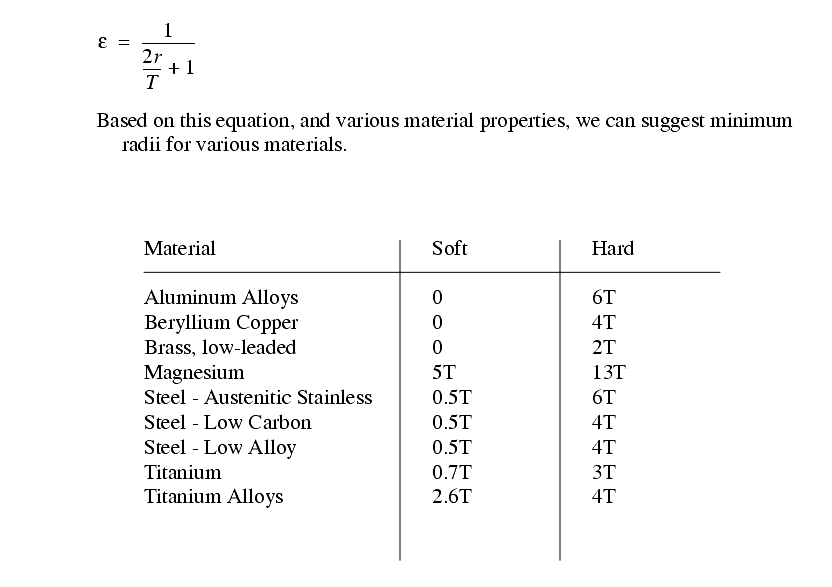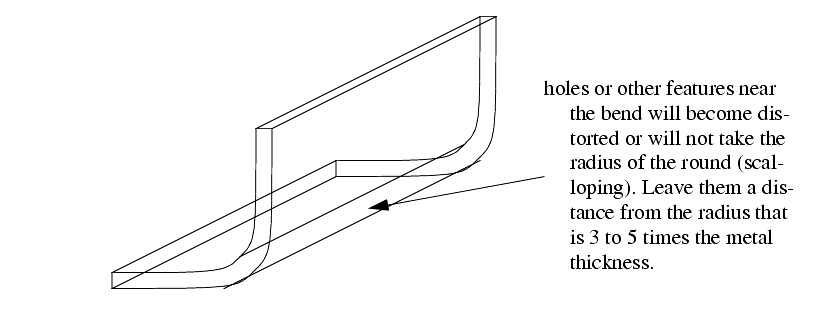
|
|
|
47.4 BENDING
������������After basic shearing operation, we can bend a part to give it some shape.
Bending parts depends upon material properties at the location of the bend.
Some of the things that may/do occur in bends,
- if the bend radius is too small the plastic deformation at the outside of the bend will result in fracture.
The basic calculations for a bend radius are shown below,

The strain on the outermost fibers of the bend is,

After sheet metal is bent it will tend to spring back to a lesser angle. The following formula relates bend radius before and after release.

There are a variety of methods for springback compensating,
The maximum bending forces may be calculated using the relationship below,

Press Brakes a small presses that will bend a sheet metal piece over several feet.
Some other operations done to sheet metal parts,
beading - the edges of the sheet metal are bent back (in a rounded shape) to stiffen the edges and eliminate the sharp edge.
flanges - a hole can be formed by punching through, and a lip (the flange) remains about the edge of the hole
When planning to bend a piece, car must be take not to punch holes too close to the bend.

Search for More: |

Custom Search
|

|